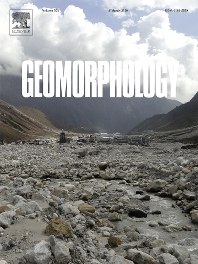
Chelsea Blanton of LCI has co-authored a technical paper in the journal Geomorphology. The paper presents the results of an analysis of coseismic slip and creep along the southern San Andreas Fault (SAF) in the Mecca Hills of southern California. Digital Surface Models generated using Structure-from-Motion-Multiview Stereo techniques on unmanned aerial systems (UAS) imagery and very-high resolution UAS orthomosaics were used to identify and measure fault-related offsets of small geomorphic features and develop a model of late Holocene slip-per-event for the southern SAF (sSAF). The aim of this research was to better constrain slip estimates from recent earthquakes along the sSAF and combine new slip data with ages of past earthquakes from paleoseismic studies to understand earthquake recurrence. Slip-per-event for paleoearthquakes, which ruptured this segment of the sSAF, and the relationship between co-seismic slip events, creep or afterslip, and triggered slip were evaluated. Examination of offsets suggests that five large, surface rupturing events produced average displacements of 2.6–3.1 m per event. Slip-per-event for paleoearthquakes supports a slip-predictable recurrence model. Gaussian distribution analysis revealed small-scale offset clusters that we attribute to climate-modulated channel incision across the fault and subsequent creep. These offset clusters support a creep rate of ~3 mm/yr in the Mecca Hills averaged over the past ~160 years. More information is available here.
